Inspiring Garden Wall Ideas for an Impacting Backyard
Between plant arrangements, patio furniture, and pergola styles, there’s no shortage of head-turning garden ideas begging to make their way into your backyard. But one area you might be overlooking is garden wall ideas.
Garden walls aren’t just there for structural support or to mark property lines. The right garden wall design can completely transform the look and function of your outdoor living space.
Keep reading for the top garden wall ideas to give your home’s landscaping that finishing touch it might be missing.
1. Enhance Your Outdoor Seating Experience
There’s no questioning the importance of multi-use spaces when it comes to interior home design. The same is also true for your outdoor living spaces.
The beauty of building a patio or landscape design from the ground up is that you can create a space that fits your needs. Consider ways to incorporate functional seating into your garden wall construction, especially if it includes a fire pit or fountain.
Even if you’re renovating an existing garden wall, there are ways to improve the functionality of your backyard. For example, you can add bench seating to a patio border by building out the wall and installing a layer of timber. Or cut out part of the wall and replace it with a lowered seating area.
If your home features an outdoor kitchen, take advantage of your garden wall as much as possible. It’s not hard to install a countertop onto an existing concrete wall. You can even replace the need for outdoor chairs with built-in dining area seating.
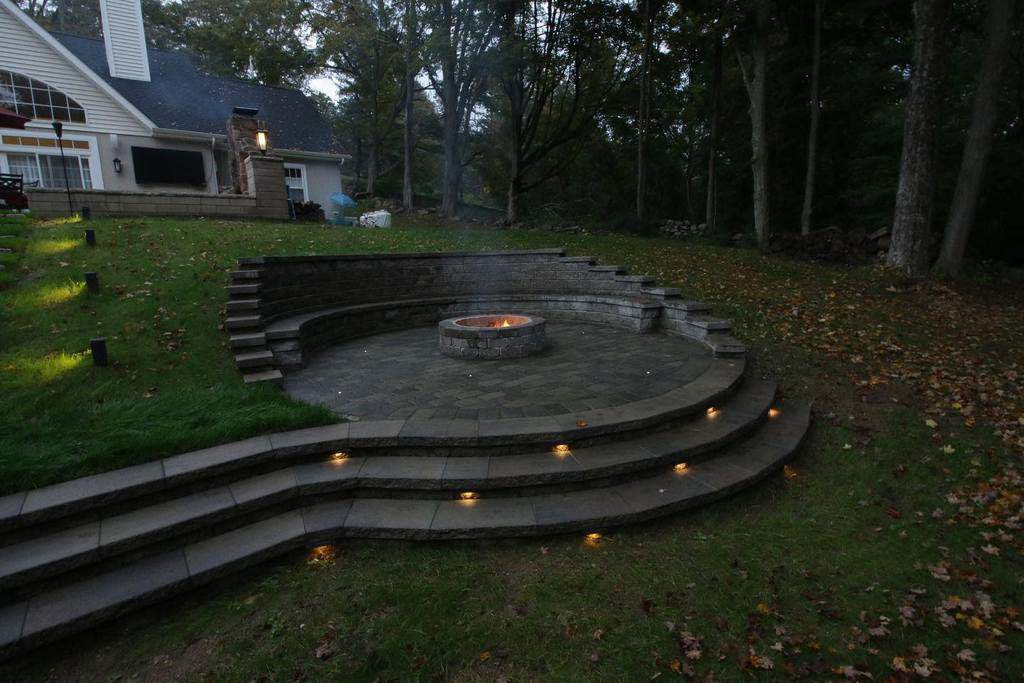
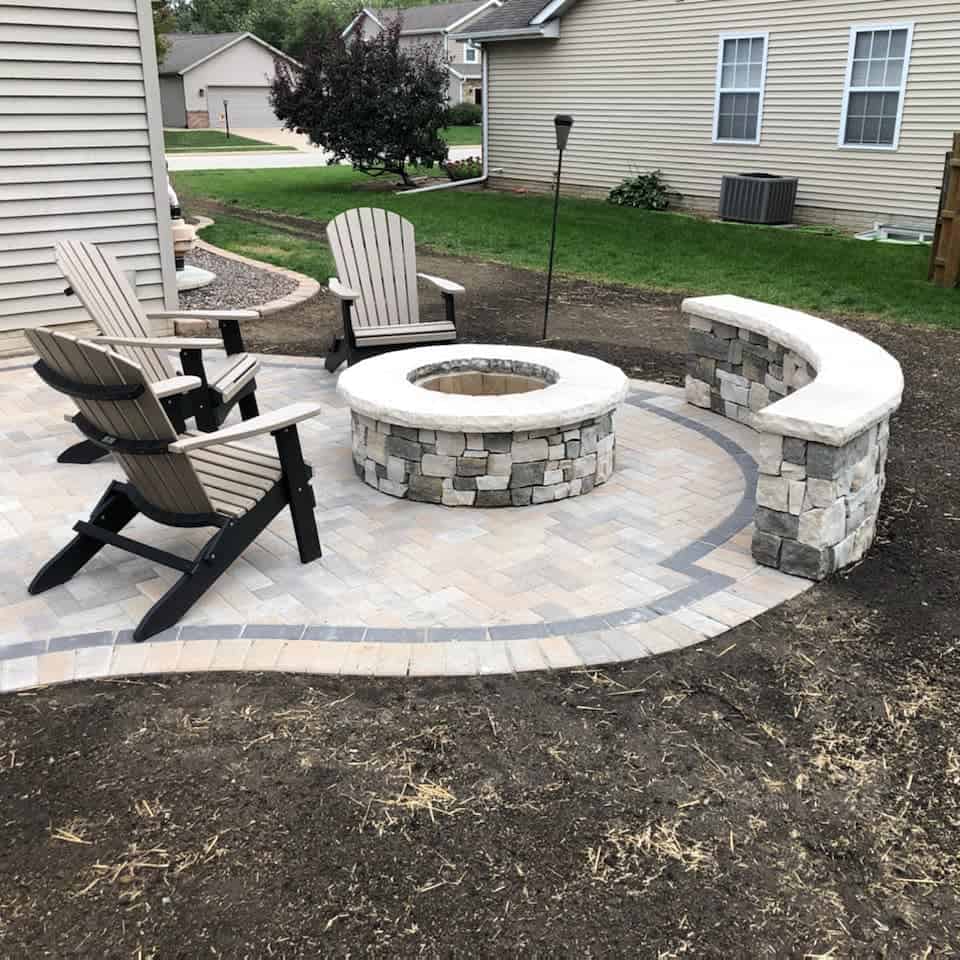
2. Functional Support
More often than not, garden walls are more than just decorative. There are many beautiful retaining wall ideas that can be both functional and aesthetically pleasing and act as garden edging.
Building retaining walls around your home’s walkway can add intrigue to an otherwise simple landscape design. Choose blocks or poured concrete that match your front steps. Leave enough space between layers to install a few tiered garden beds.
If concrete isn’t your preferred material, there are plenty of unique support wall styles to choose from. Cut timber makes for a gorgeous retaining wall, especially against a forest backdrop.
A gabion basket is the best way to achieve a retaining wall that includes natural stones. Most gabion wall designs use heavy-duty chicken wire, but you can give your gabion wall idea a stylish twist with wrought iron baskets.

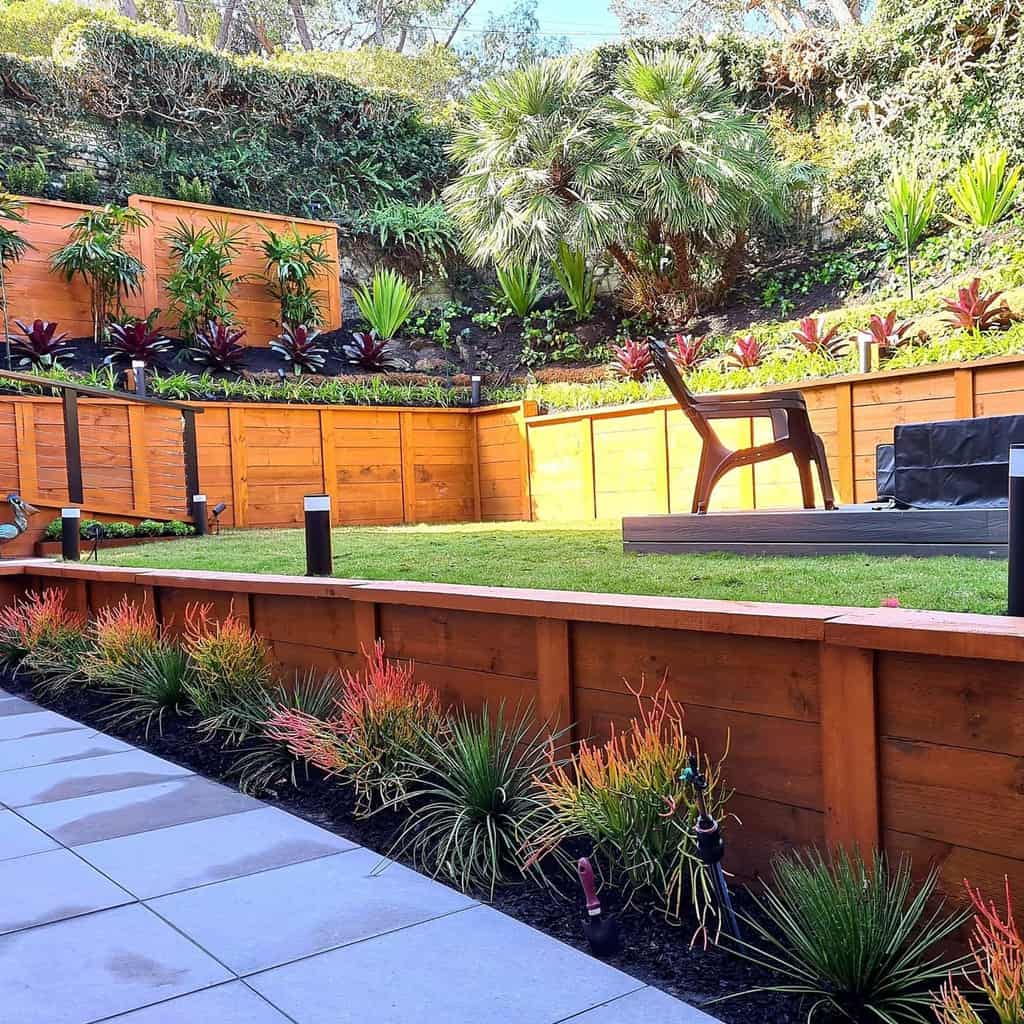
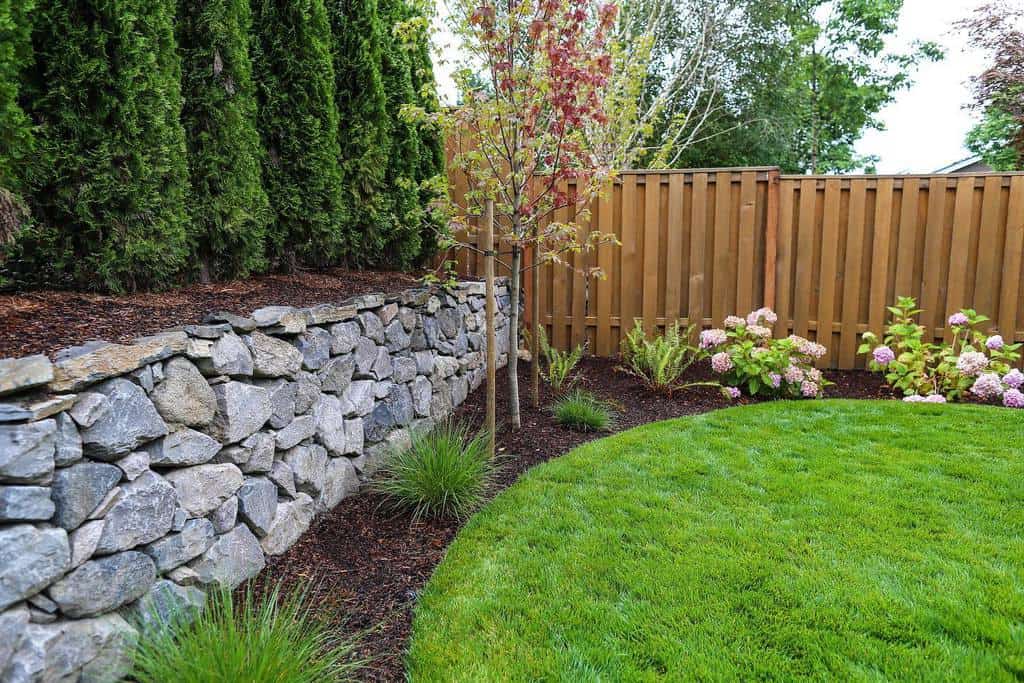

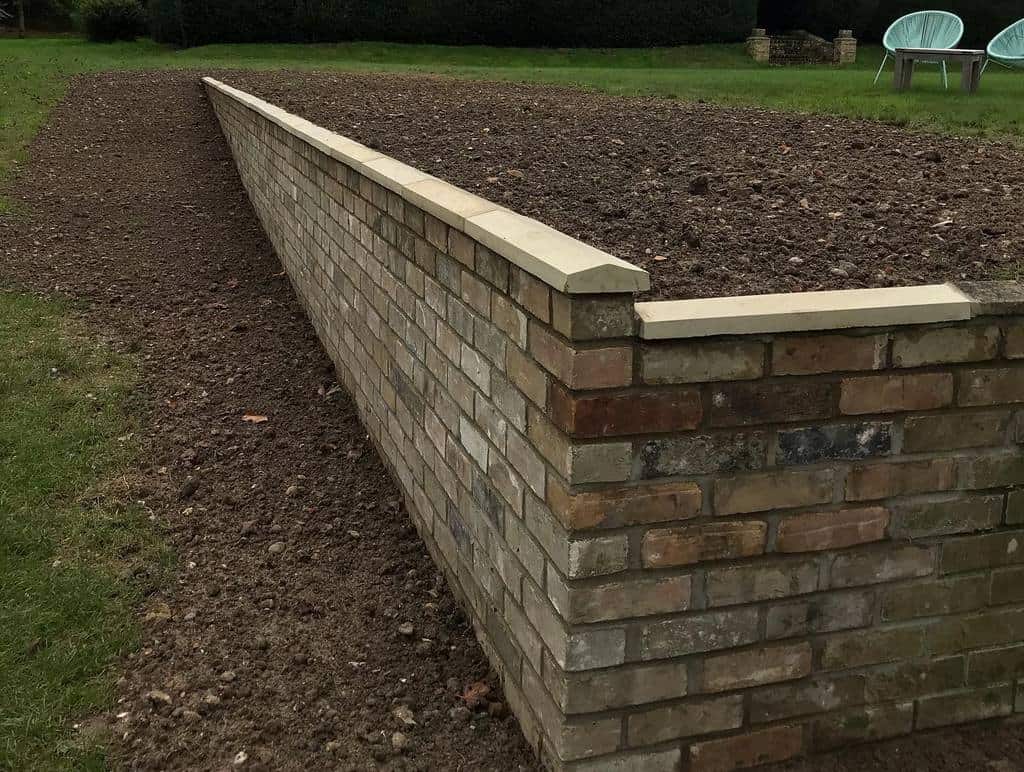
3. Charming Garden Wall Ideas
It’s common to see brick walls alongside patios or paved entryways. In the right landscape design, though, a brick wall will also contrast beautifully against a lush green lawn or garden bed.
Whether you’re laying bricks outside your front porch or in the backyard, it’s crucial to coordinate your garden wall with any nearby structures. If your home’s exterior features a brick overlay or your wall is adjacent to a set of pavers, mismatched bricks will detract from the finished design.
The type of brick you use will play a major role in your garden wall’s final aesthetic. Uniform bricks give off a contemporary air. Meanwhile, loosely laid bricks keep some of their natural texture, lending a rustic touch.
Of course, the classic red brick wall deserves some love. While some people find this look dated, it’s the perfect match for any colonial or English garden design. Choose pre-worn or aged bricks in various shades of red for a softer farmhouse look.
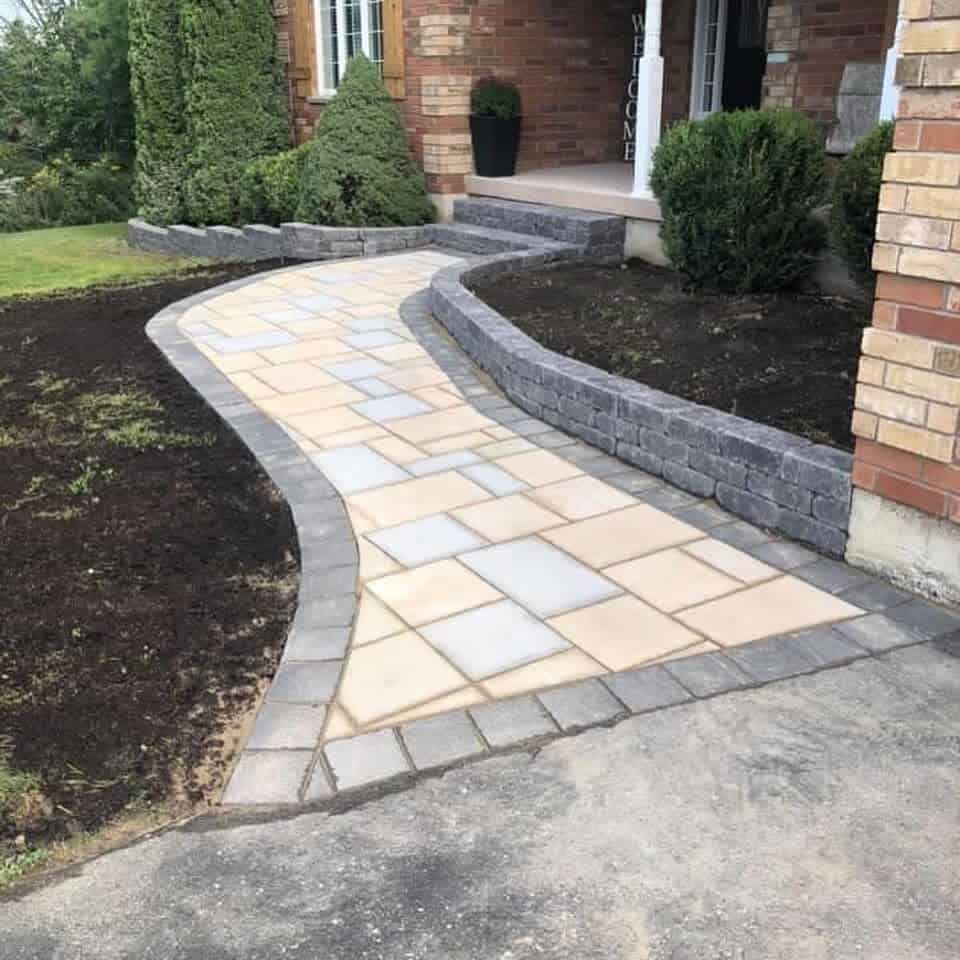
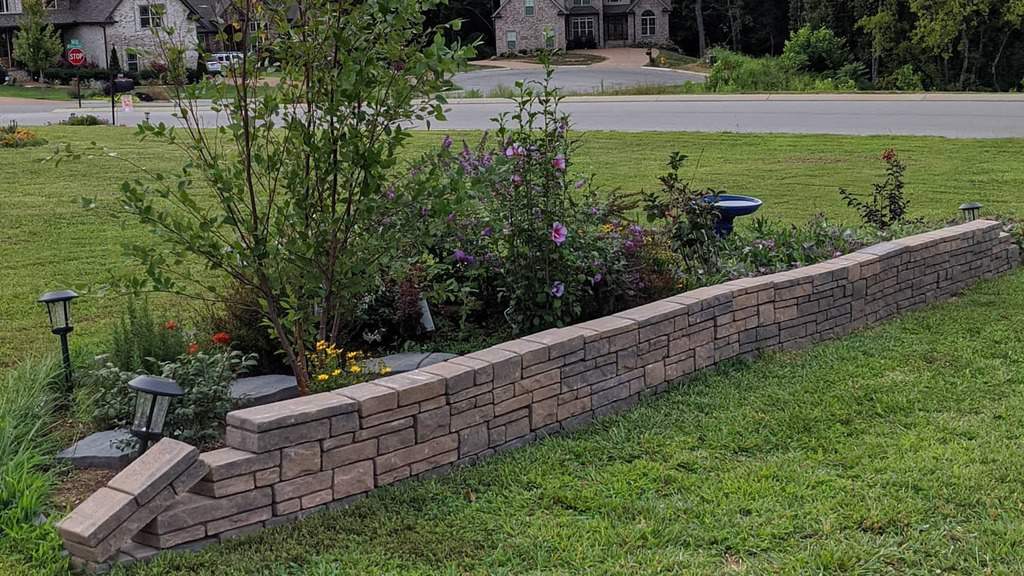
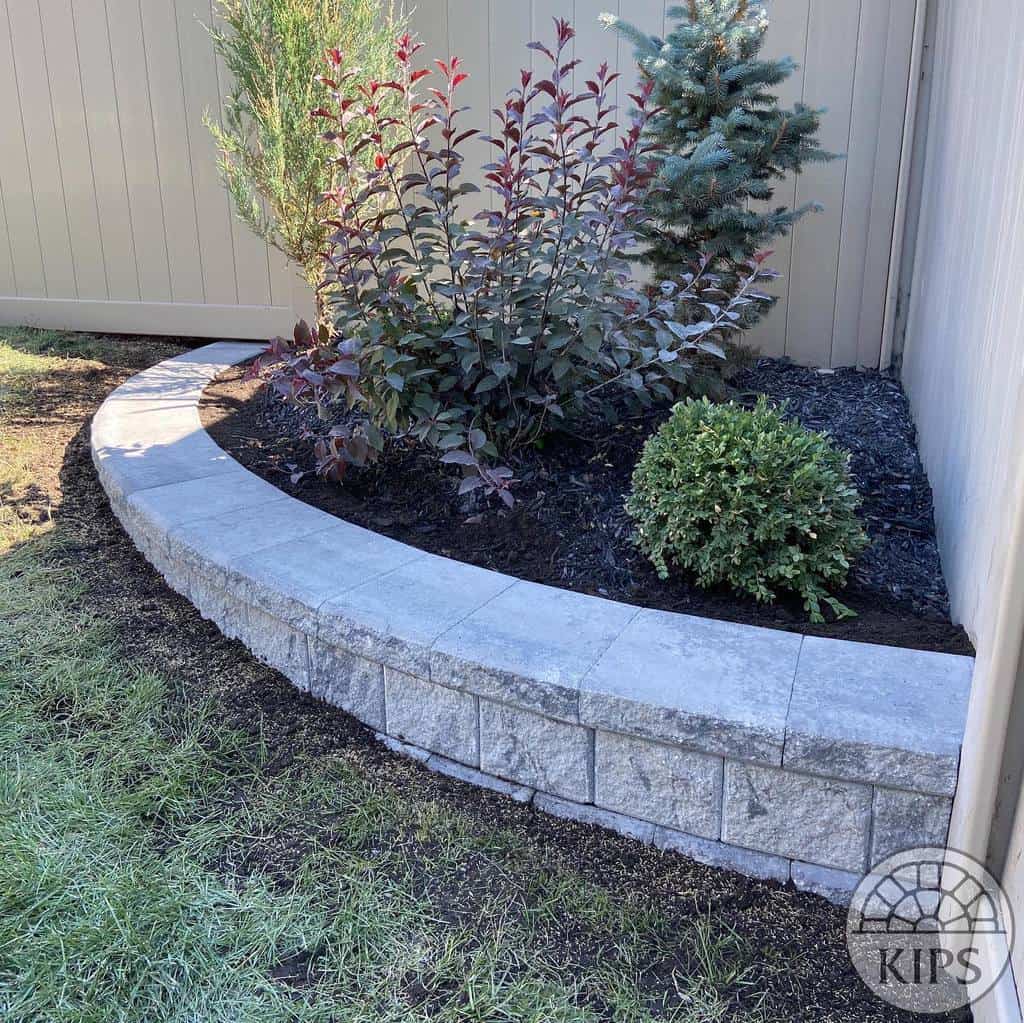

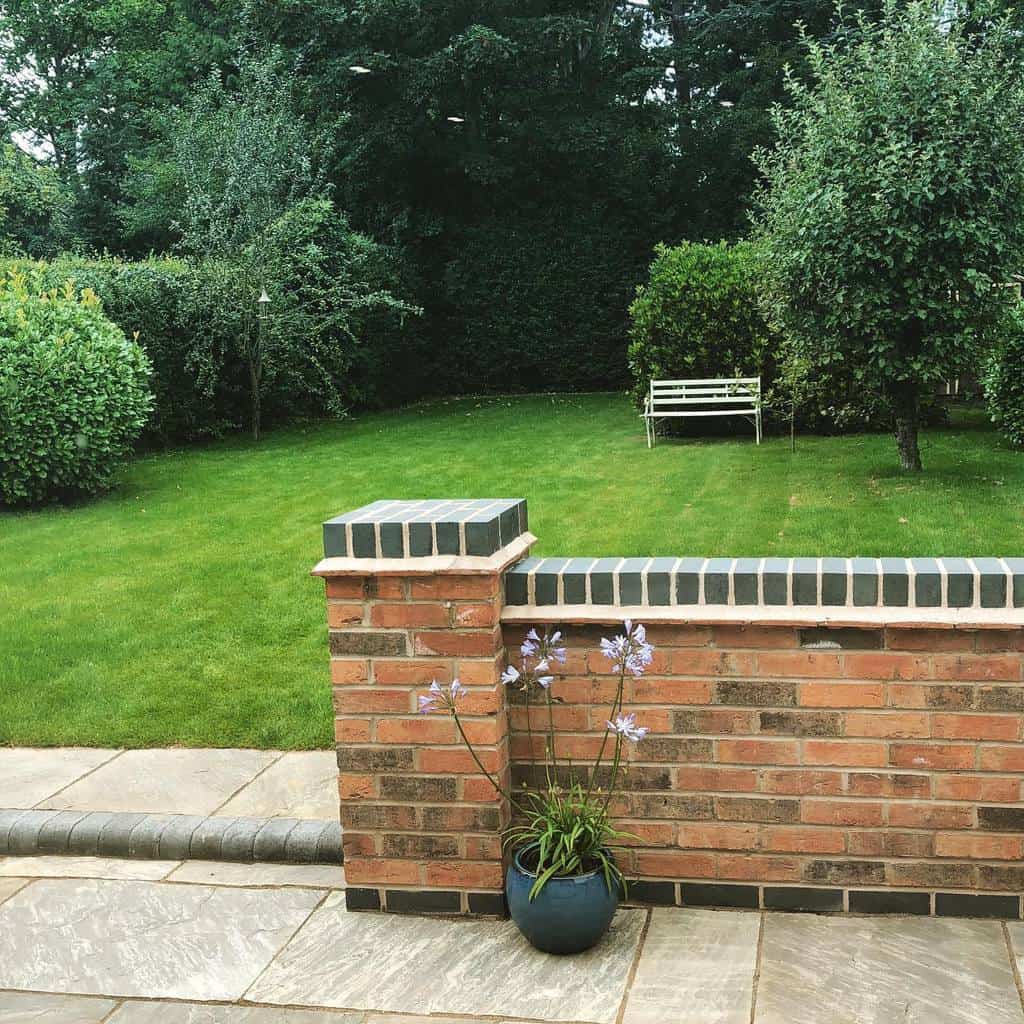
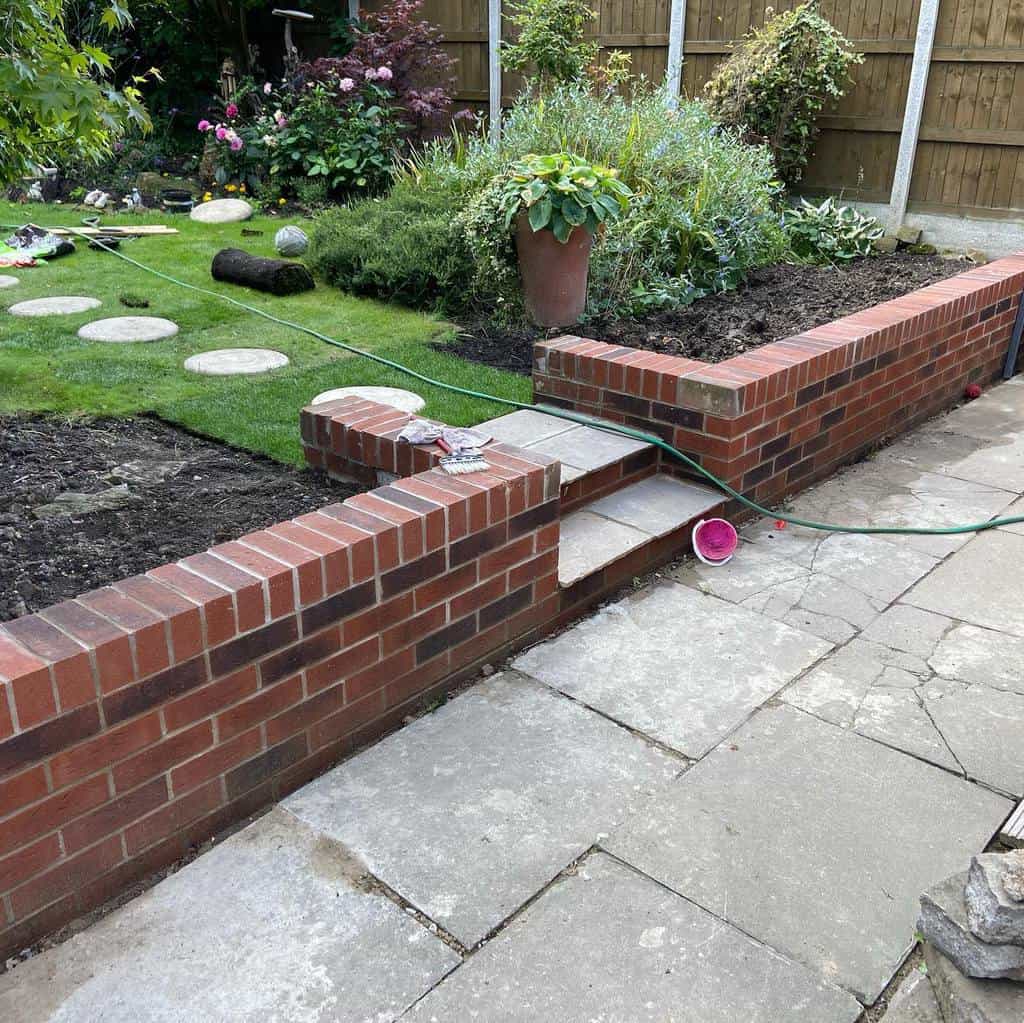
4. Creative Decorative Ideas
Adding a garden wall of any kind to your property unlocks all kinds of design potential. Yes, you can use flowers and shrubs to decorate your wall. But you can also integrate lighting, water features, and a fire pit into your design.
Building a fountain or waterfall into your garden wall is a great way to create a peaceful outdoor living space. The same is true for a fireplace or bonfire pit. Be sure to position these elements in a central location where you and your guests can appreciate them.
Built-in garden lighting is both functional and atmospheric. Lanterns are a popular choice–choose solar-powered models to avoid messing with outdoor outlets and power cables. You can also use recessed lighting to illuminate steps or highlight the edge of your patio.
Don’t forget to play around with different materials in your garden wall design. For example, using different-colored stones can add much-needed dimension to a patio wall and walkway.
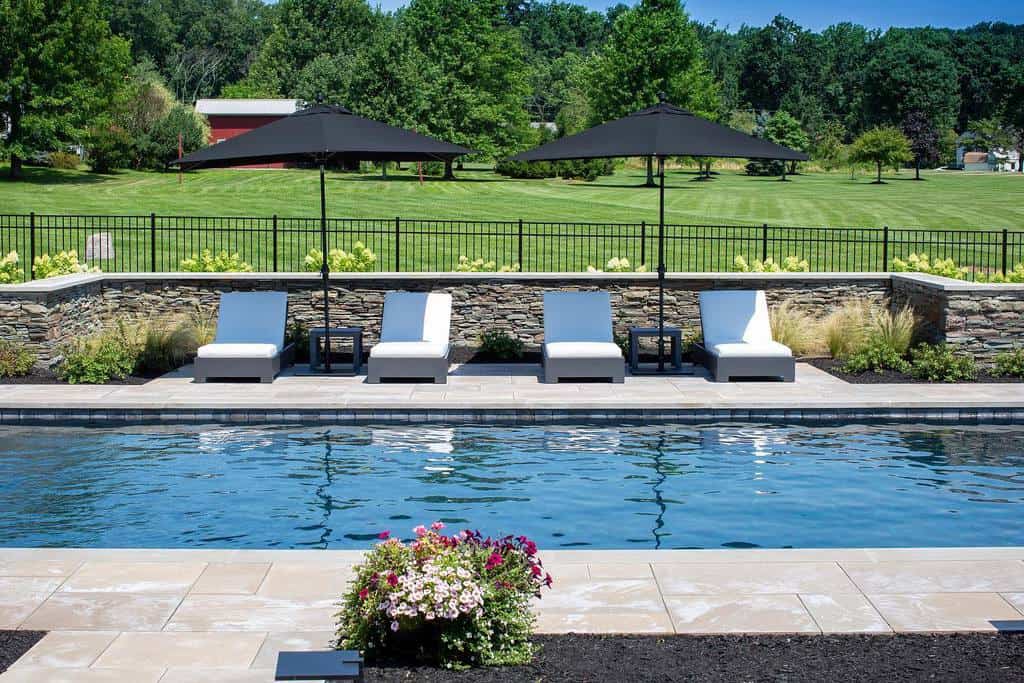
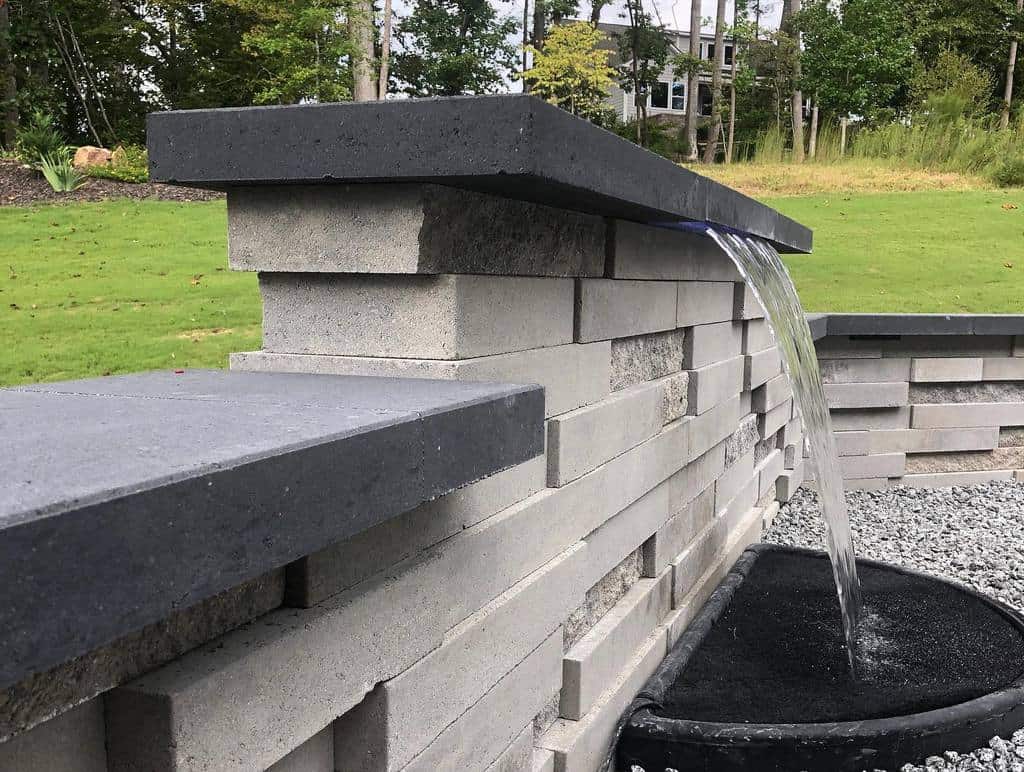
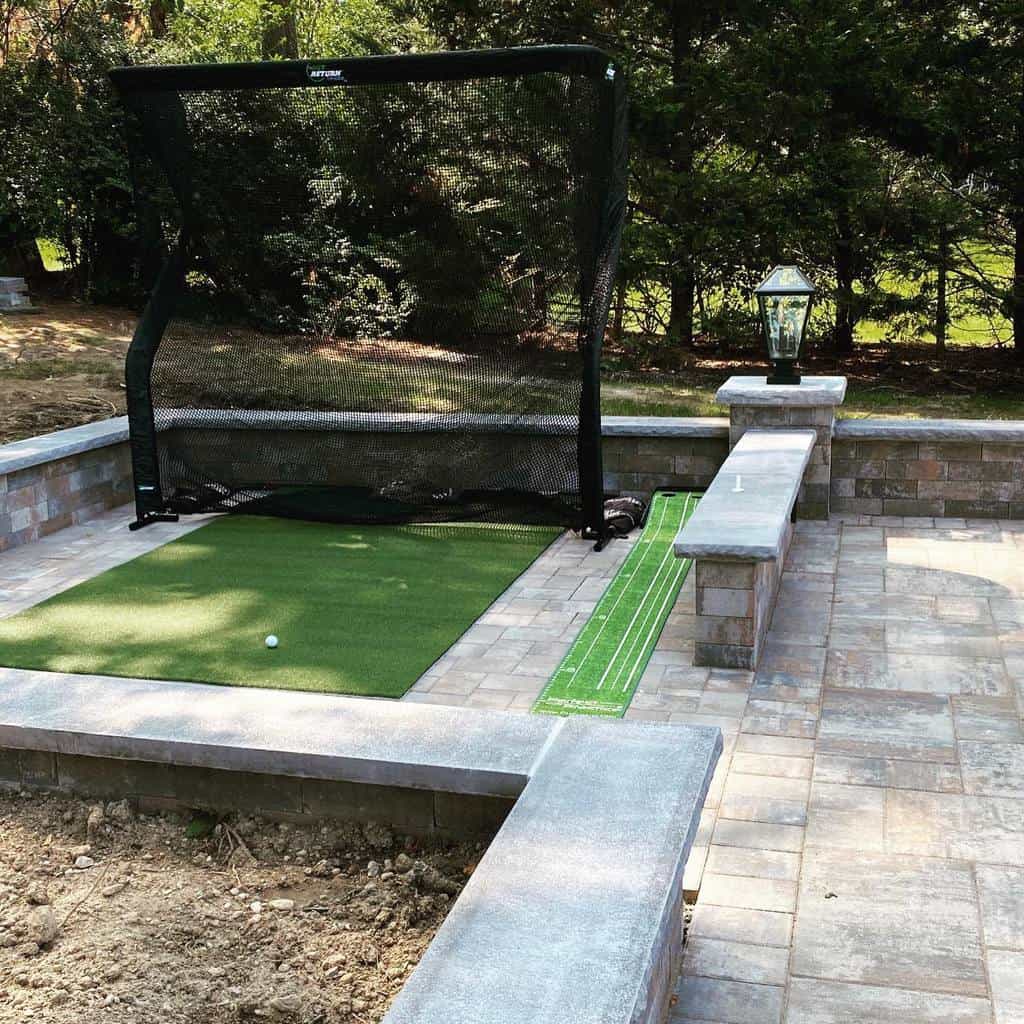
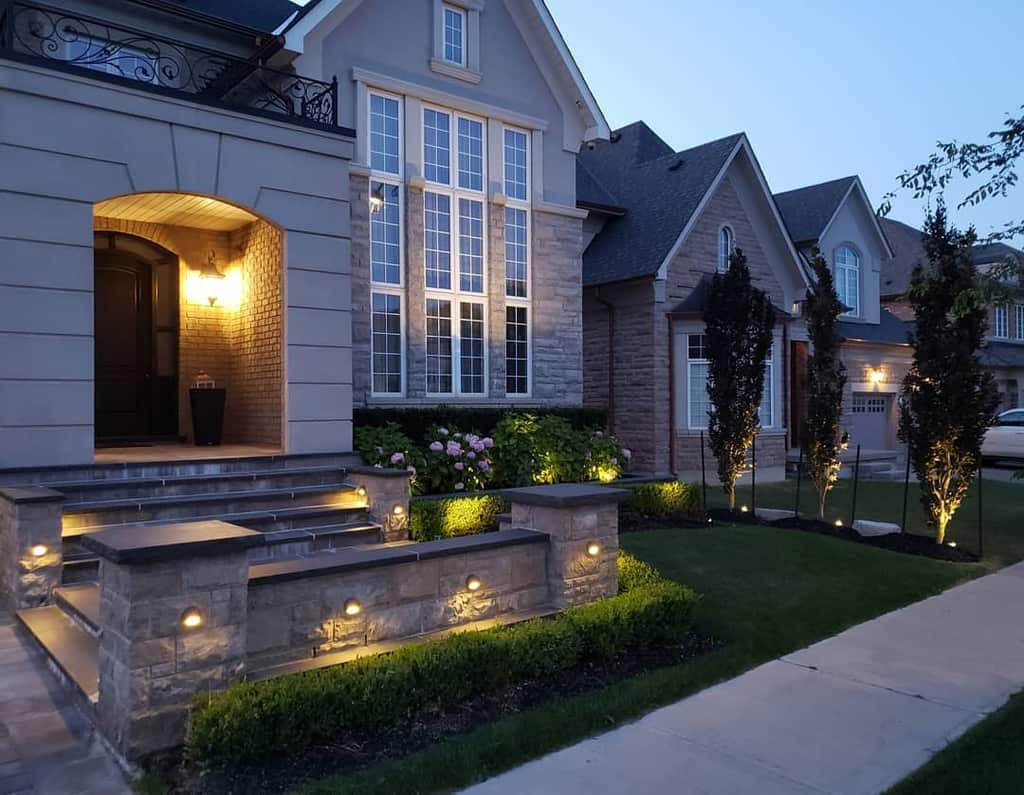

5. Raised Wall Designs
Landscapers will often place a vertical garden wall up against an existing fence, outbuilding, or your home’s exterior. Tiered retaining walls can completely transform your garden design while protecting the integrity of your lawn. The little nooks these walls create are the perfect settings.
There’s also no rule against creating a stand-alone vertical planter using this method. Concrete and timber garden boxes are both great alternatives to full-size walls. You can use them to line a privacy fence, patio border, or to create a one-of-a-kind container garden.
If you have no room for a garden bed, skip it and turn your entire stone retaining wall into a DIY vertical garden. You can start from scratch or turn an existing structure into a living wall. You’ll want a retaining wall featuring a variety of natural stones (they should not fit together perfectly).
Add some gardening soil to the gaps, and you’re good to go. For this type of vertical gardening, reach for plants with small root systems–succulents, stonecrop, creeping thyme, etc.
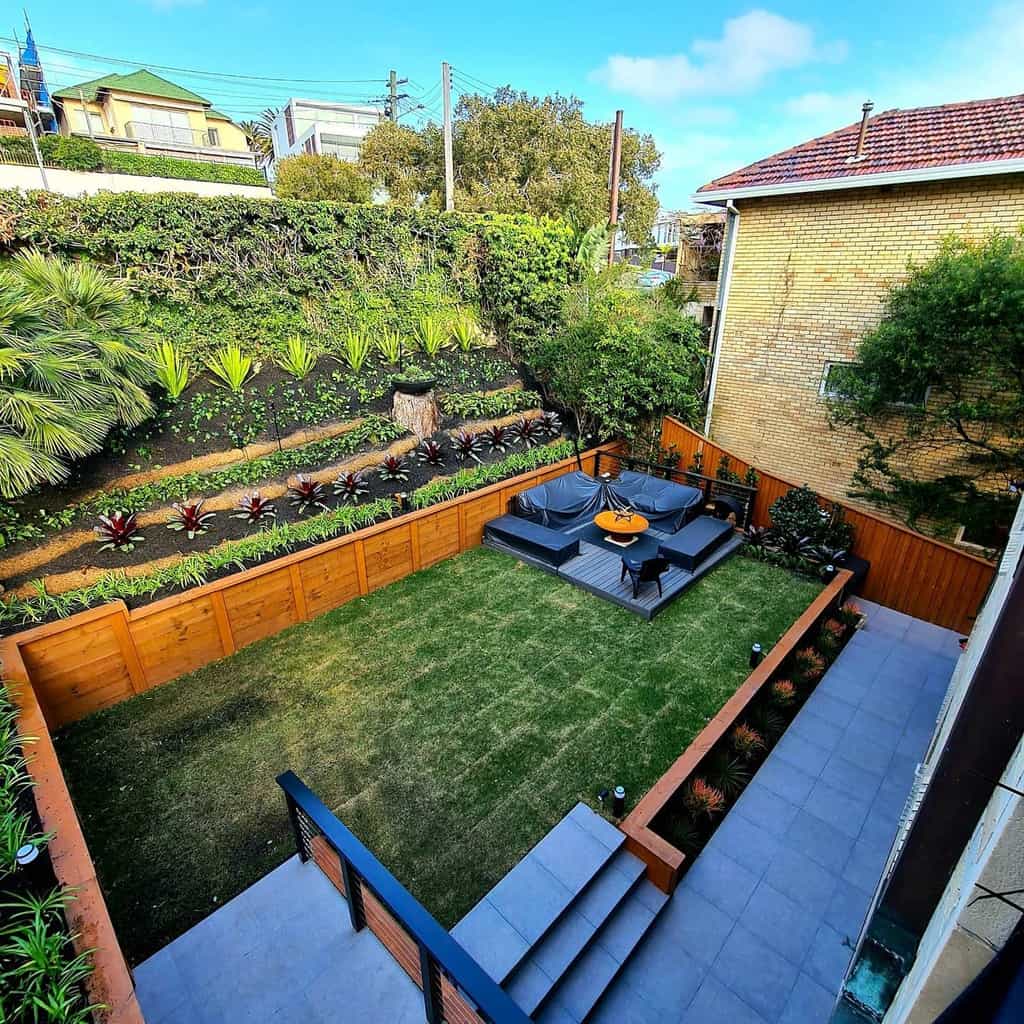
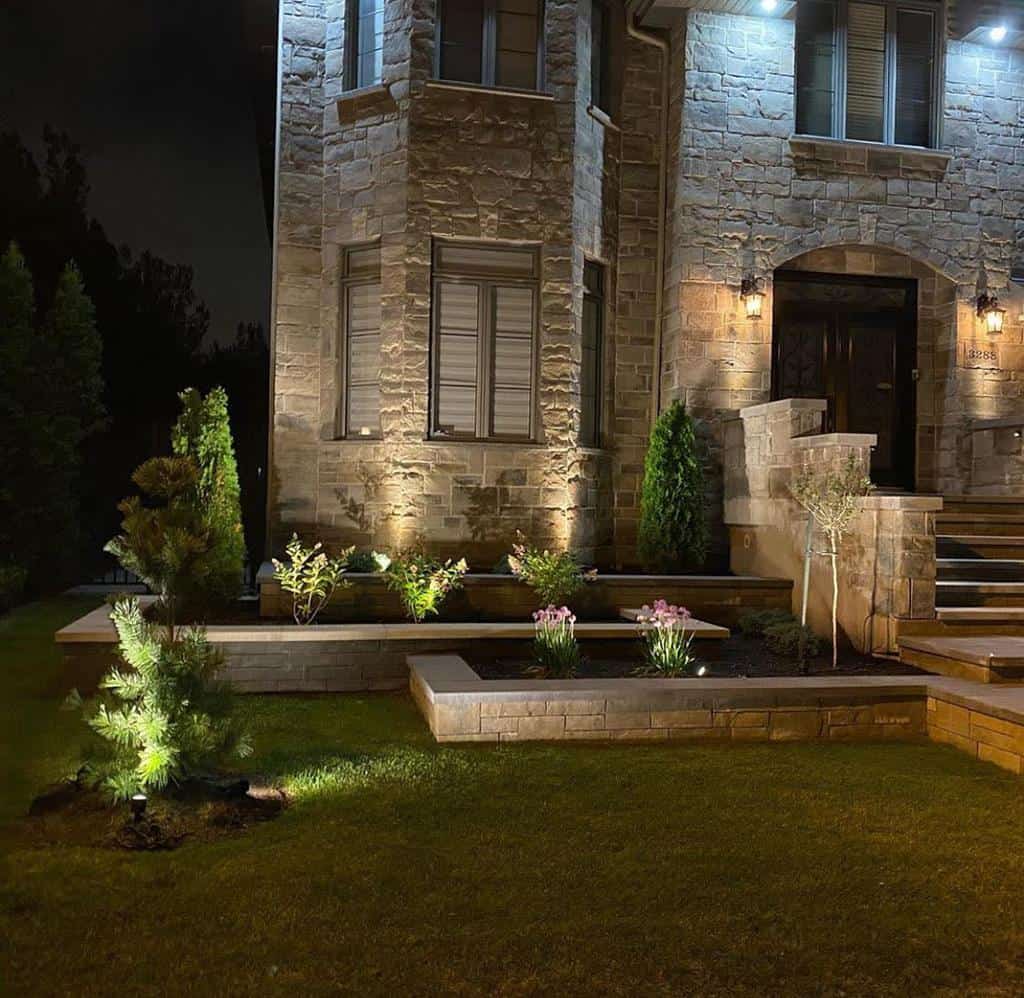
See more about - Garden Trellis Ideas
6. Embrace Modern Aesthetics
In both interior and exterior architecture, modern design is all about building sleek lines while keeping ornamentation to a minimum. For peak modern aesthetics, nothing does the trick better than a poured concrete retaining wall painted white or black.
Since your garden wall’s overall shape will be quite simple, look for other ways to add interest to your garden design. One of the easiest ways to do this is by using a range of colors on your wall.
Opt for stone with natural inlaid designs or concrete blocks molded to mimic wood grain texture. It’s fine to use rough-edged stone blocks on your wall, but be sure to contrast this material with a polished layer on top.
Stay away from more traditional wall decorations like lanterns or ornate fence caps. Instead, accent your garden wall with built-in lighting or bench seating. Incorporating recessed garden beds in your modern garden wall can help add dimension to your landscape as a whole.

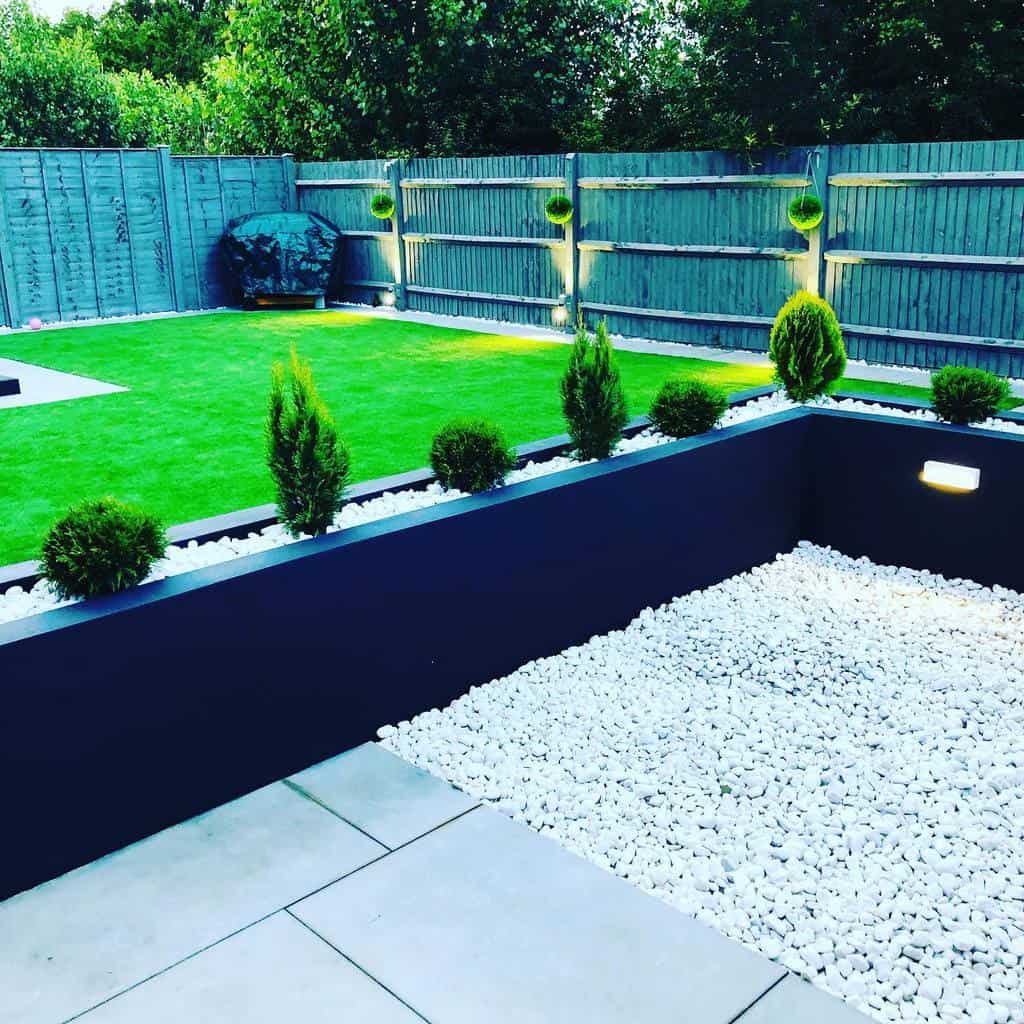
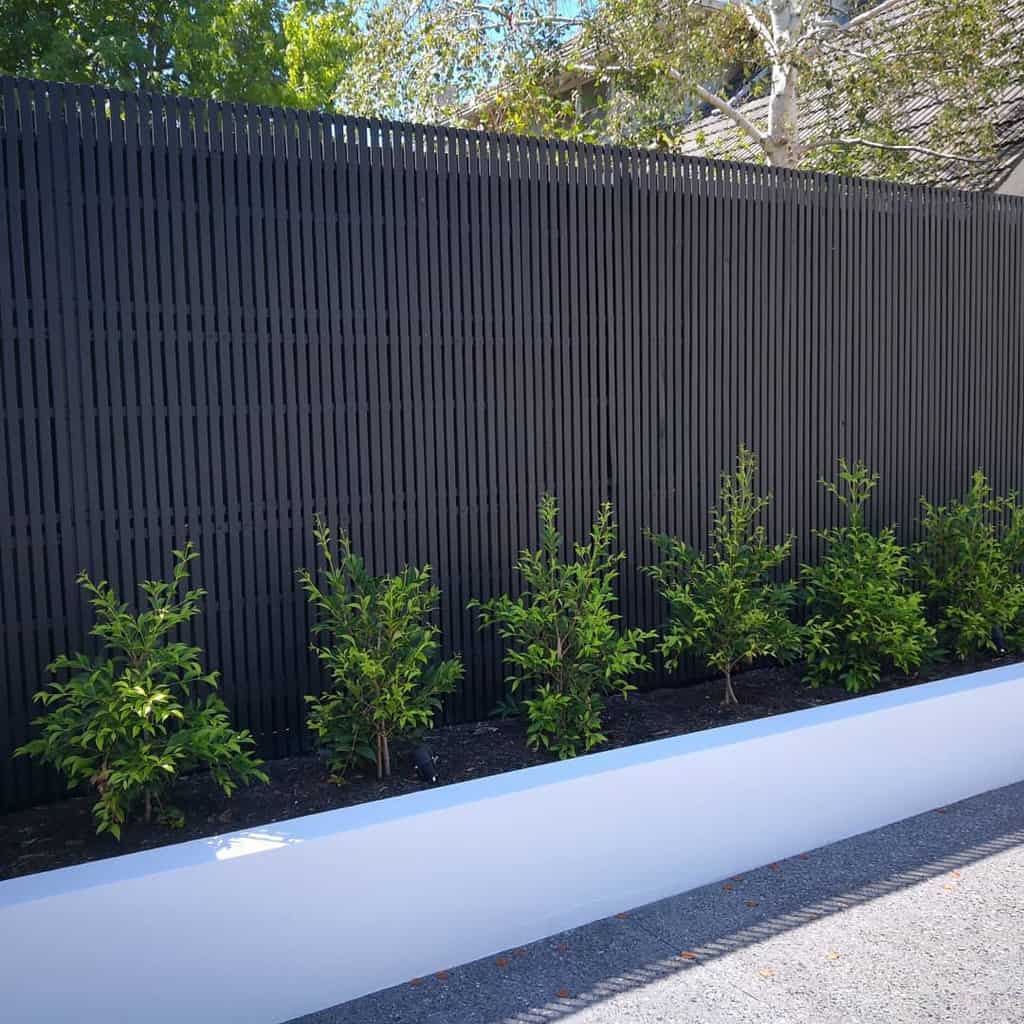
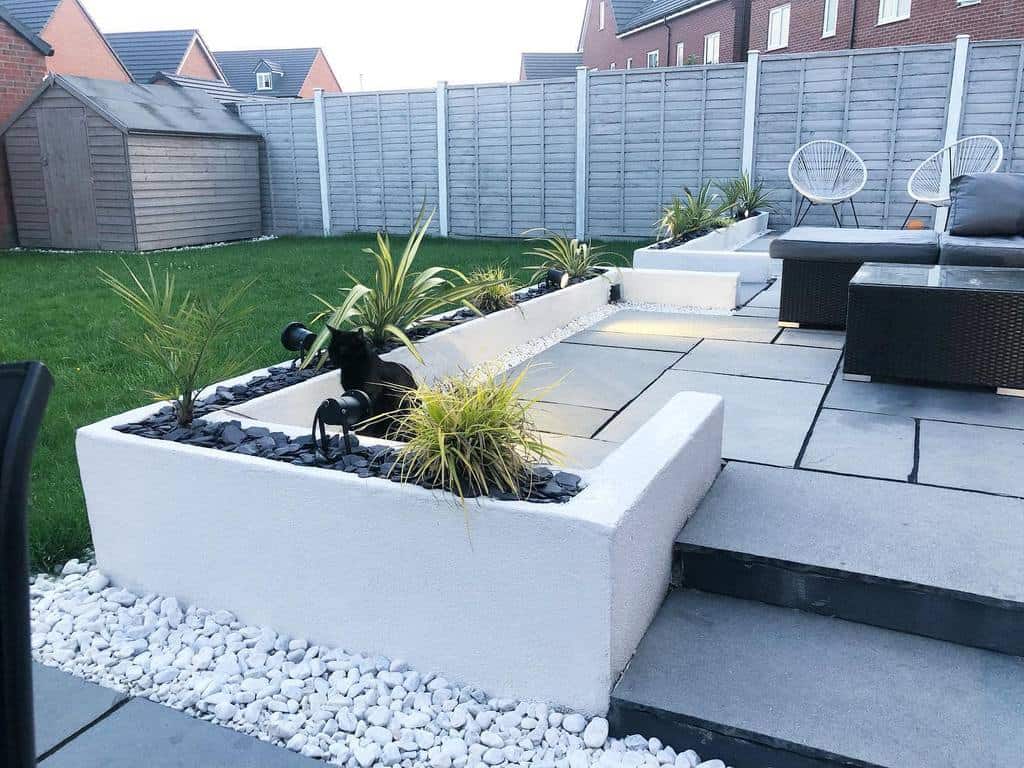
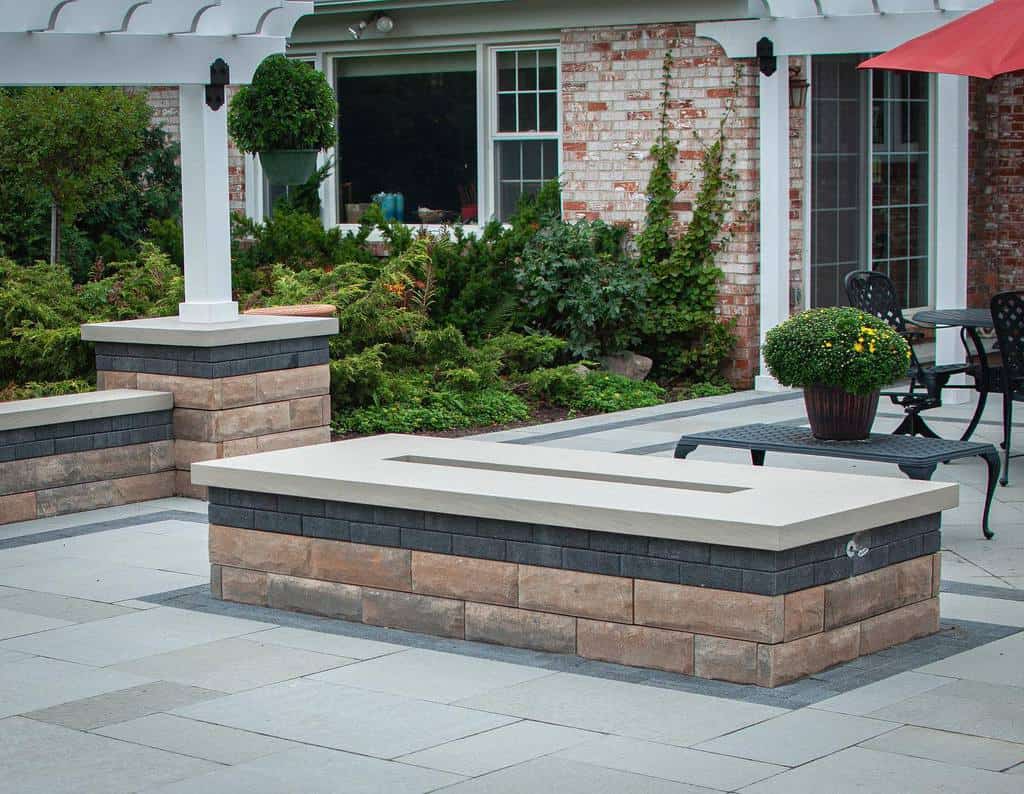
7. Stone and Rock Elements
If you want a garden wall that blends in rather than contrasts with your landscaping plants, a stone or rock wall is likely your best option. Sandstone is an especially good material for a drystone wall that lends the perfect amount of rough, natural texture to your yard design.
Stacked layers aren’t your only option either. Line up large stones to create a makeshift support wall bordering your driveway, patio, or garden bed. While labor-intensive, the final product is the closest to a natural retaining wall you can get.
Introduce moss or spreading vegetation to your stone wall for an even more organic look. If you don’t want to fill the gaps in your garden wall with soil, you can plant trailing vines on top for a similar effect.

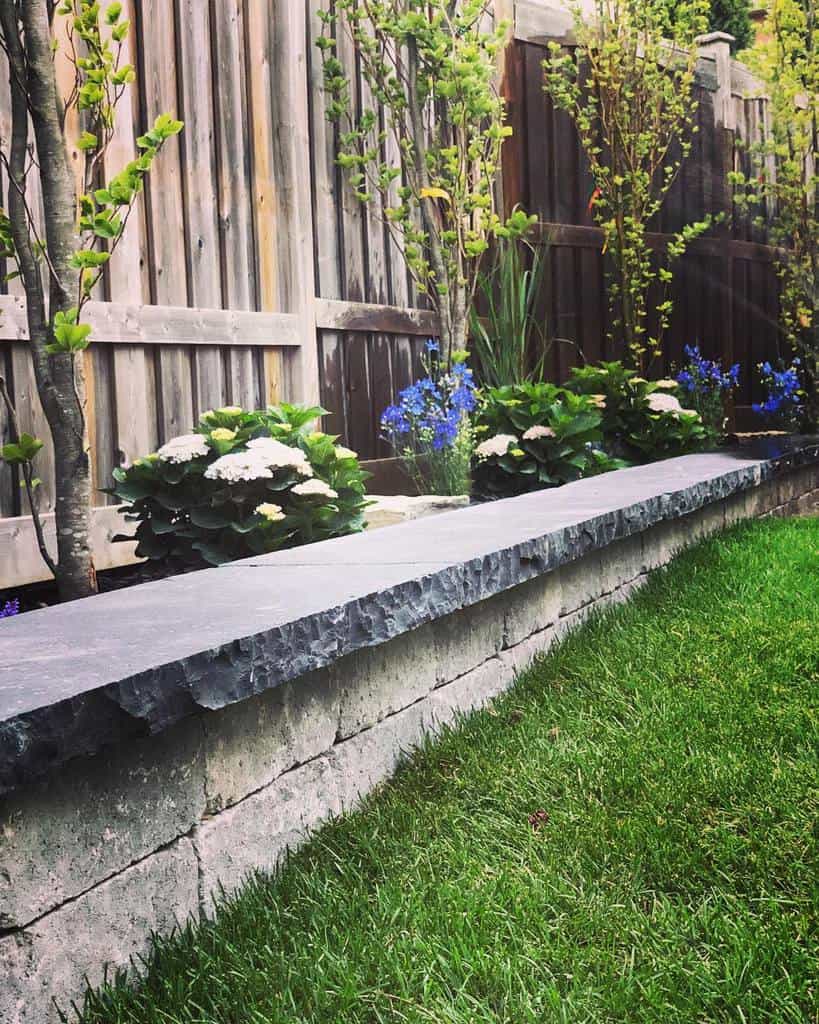
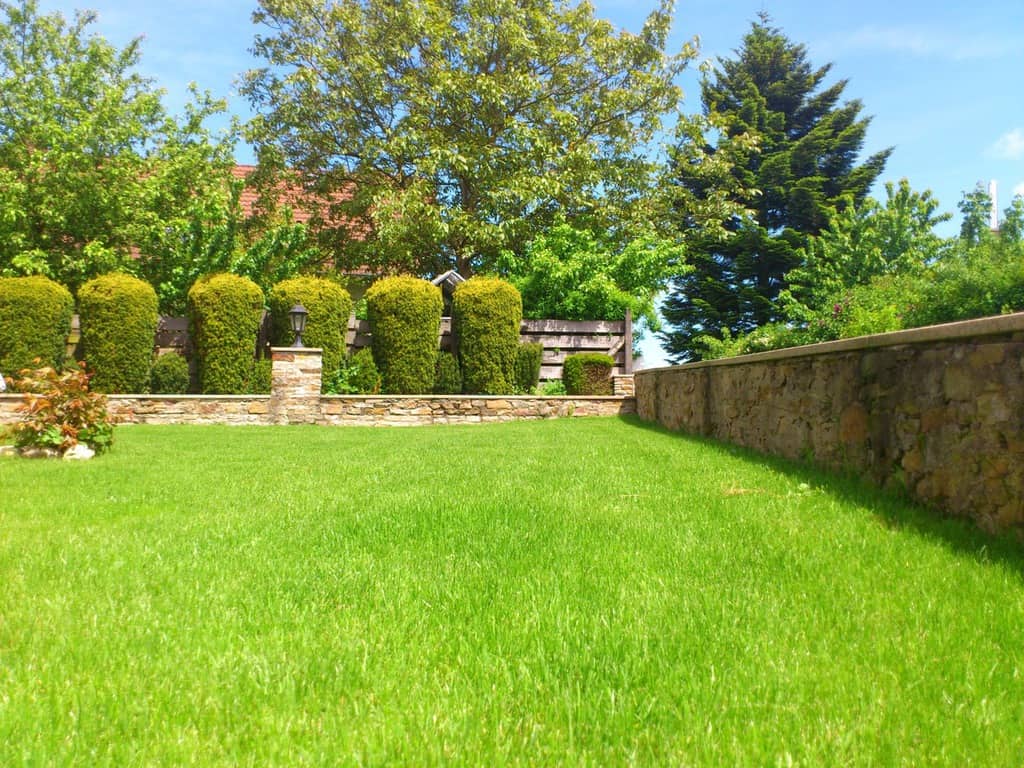
8. Garden Wall Fence Inspiration
When it comes to garden wall examples, we usually think of supportive retaining walls. Yet, swapping out a traditional wooden fence for a small stone wall is a great way to divide your outdoor space.
You can install a garden wall anywhere you’d place a fence or hedge. A stone wall is an excellent way to section off your front yard without harming your home’s curb appeal. Brick walls work particularly well with cottage, Tudor, and Victorian-style architecture.
Use garden walls along the edge of your backyard patio or terrace. Short stone walls offer just enough division from the rest of your yard or garden without making the space feel constrictive.
Don’t miss the chance to install lanterns, planters, and other decor elements on your border walls. If your garden walls butt up against a sidewalk, walkway, or poured concrete patio, save space on the opposite side for a small garden bed.
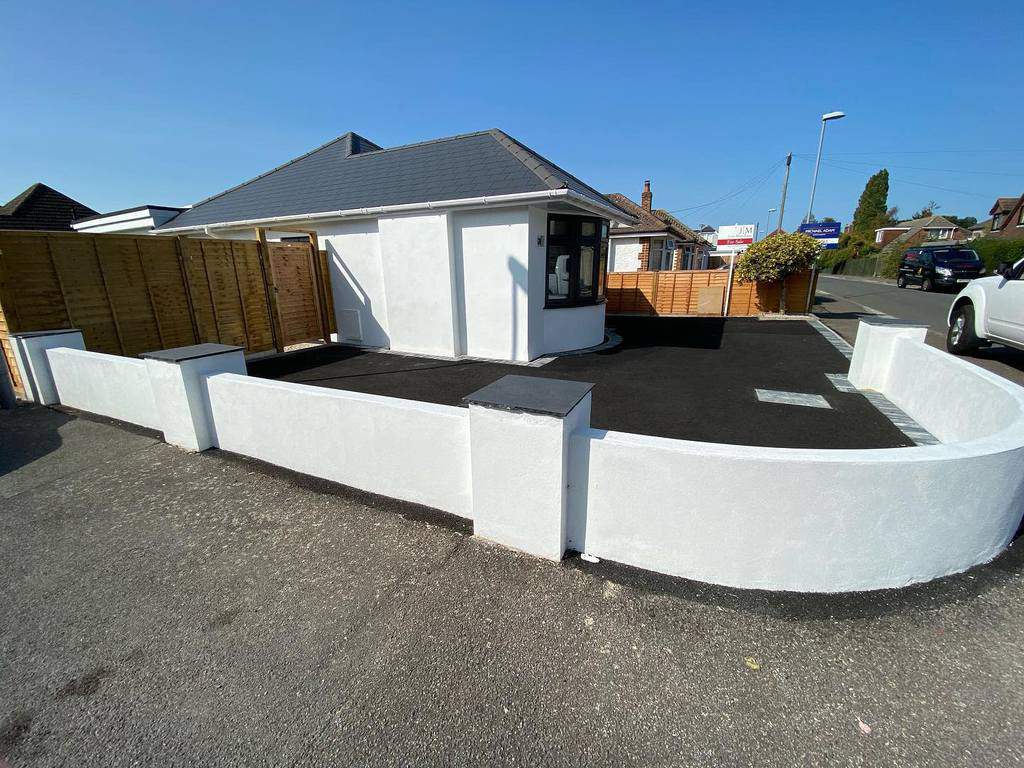
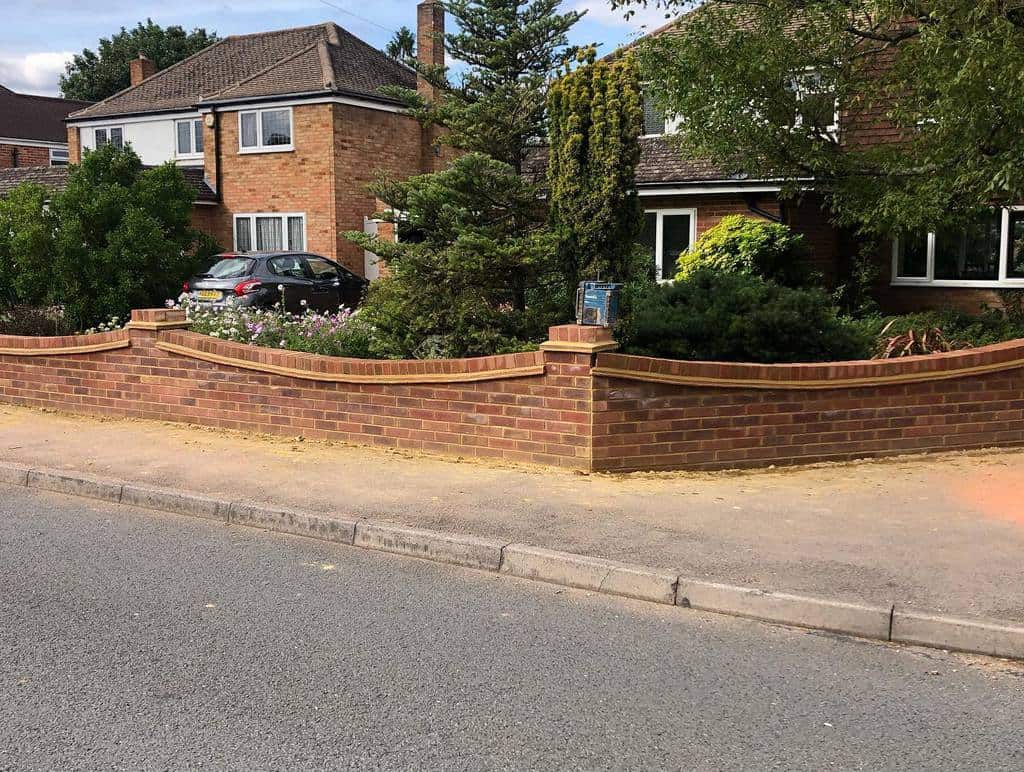
9. Adding Structure and Style
From rustic to colonial, block garden walls are everywhere in contemporary landscape design. While this is partly because of how affordable concrete block walls are, they can also be quite stylish.
The idea of a block wall likely brings to mind a structured, symmetrical design. But many of the most beautiful block garden walls use natural stone instead of cut blocks.
You can build a wall using heavy concrete blocks or small pieces of stone. Different materials will create differing aesthetics. But they also offer plenty of flexibility for those with a limited budget or access to landscaping stone.
You can use stone blocks to add lower levels to an existing garden wall. If a wood fence or gabion wall lines your property, create a block wall below to hold landscaping elements or a flower bed.
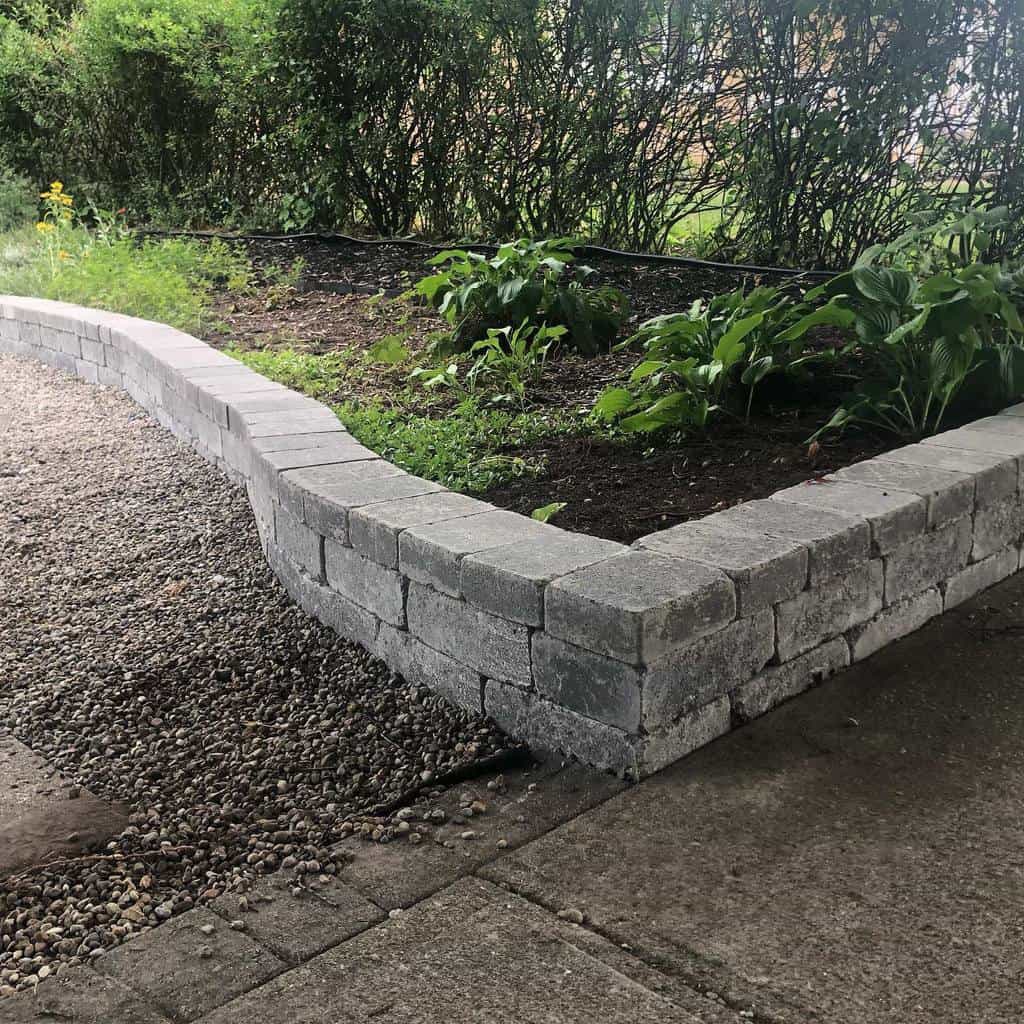
10. Create Curved Elegance
Before laying down your garden wall, think about its shape. Straight walls are the easiest to plan out and install, but a curved concrete wall can take your landscaping to the next level.
Brick and stone are the most common materials for a curved wall. Uniform blocks are best for a manicured look that matches modern or contemporary architecture. For a softer, rustic appearance, go with natural-looking river rock.
Keeping your mind open to a curved garden wall is also a great way to frame landscaping features without losing outdoor square footage. Use a curved wall design around a natural pond, pool, or patio area–you can leave the wall plain or add a colorful flower bed up top.
Even if a curved garden wall isn’t a necessity, this style can be a welcome alternative to straight-and-square retaining and landscaping borders. Opting for a curved wall can maintain your garden or yard’s natural flow while still adding structure to your design.
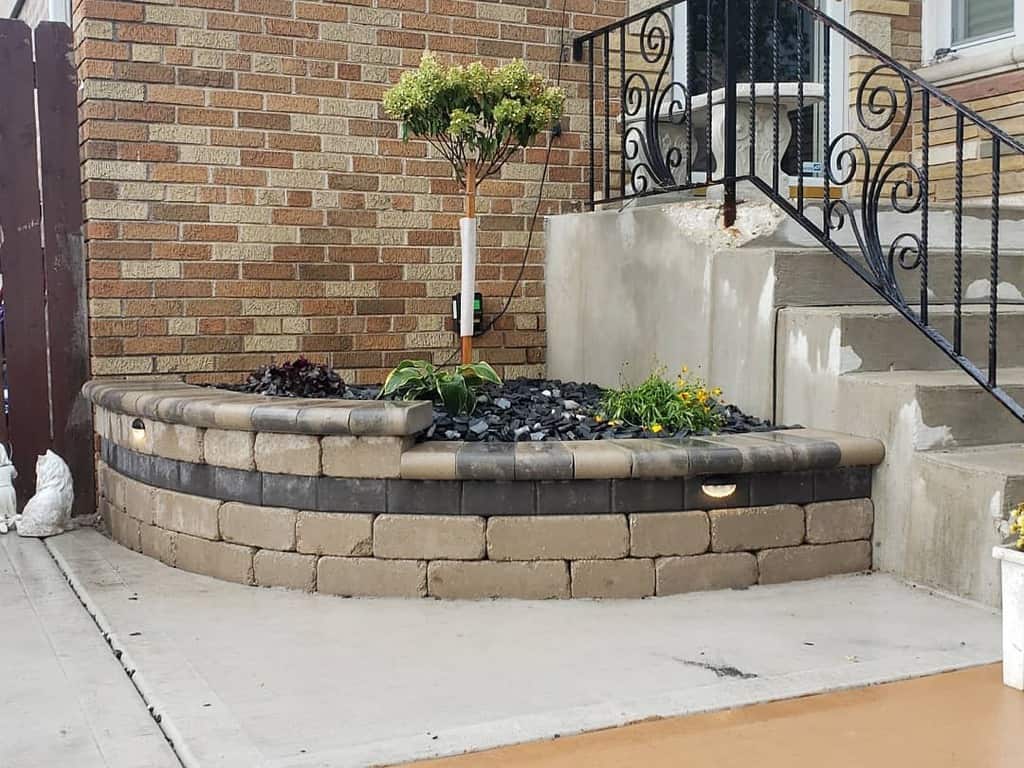
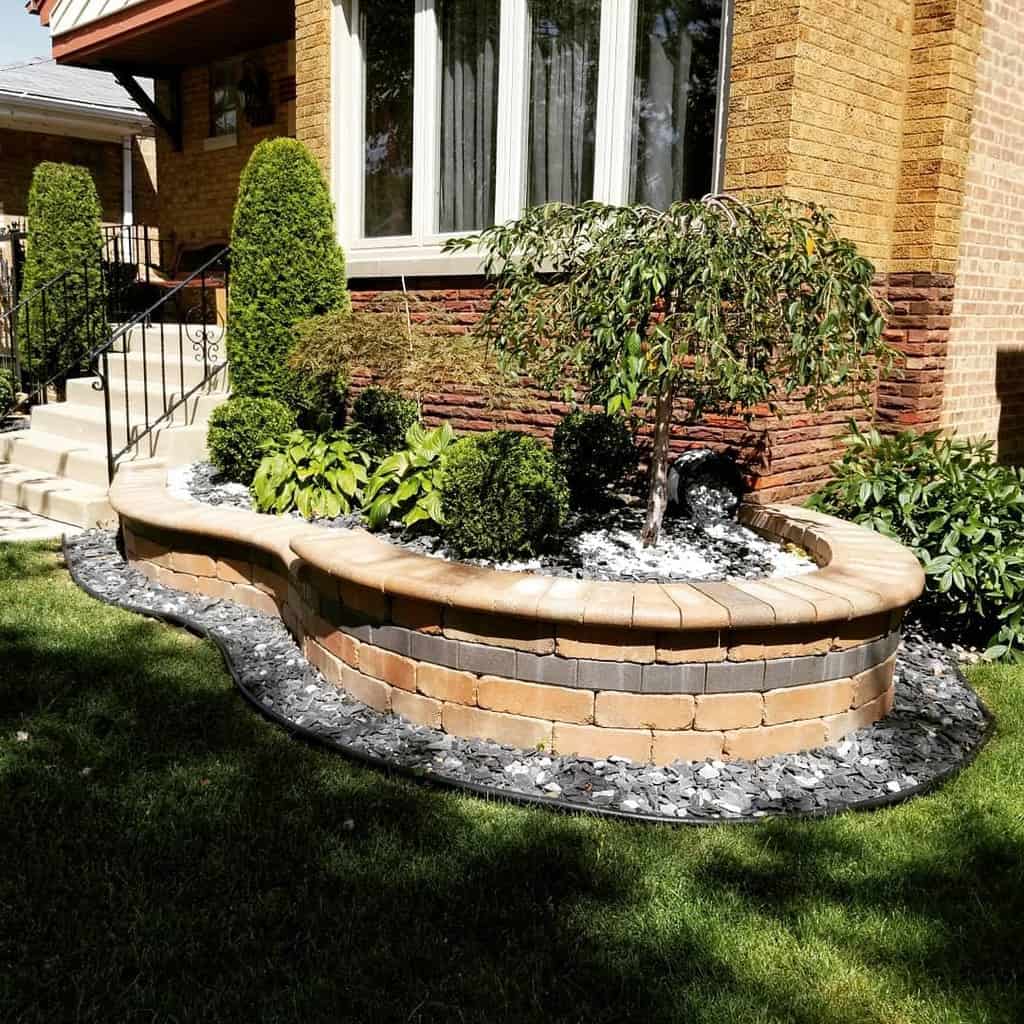
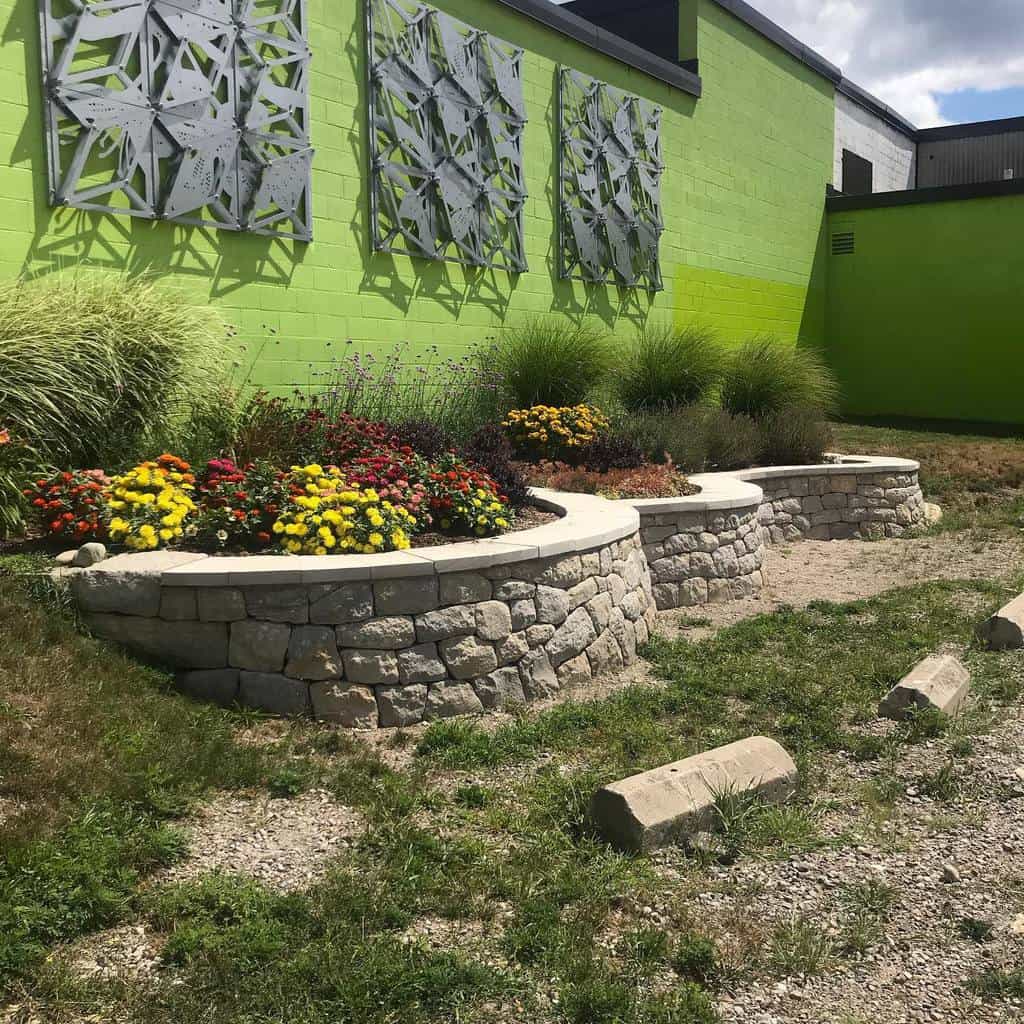
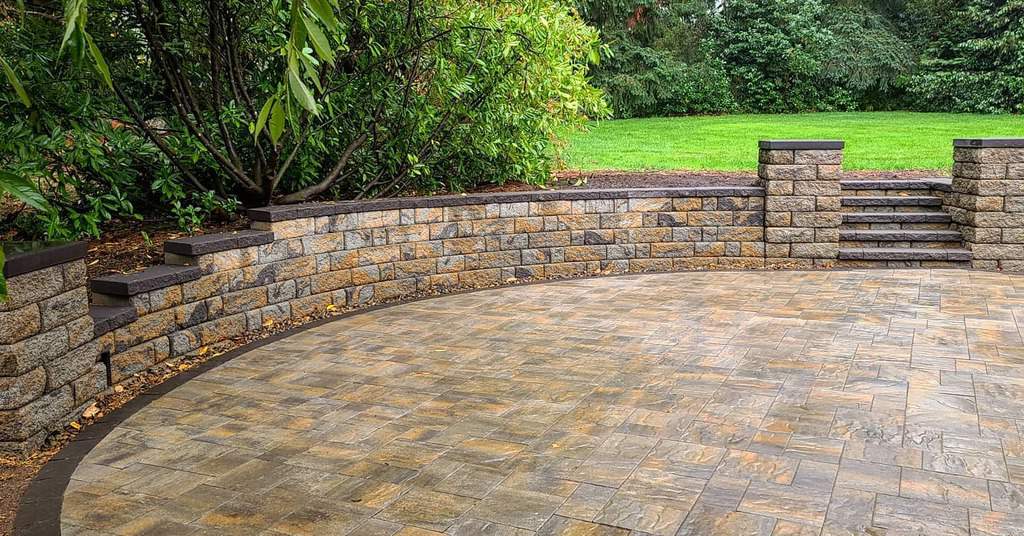
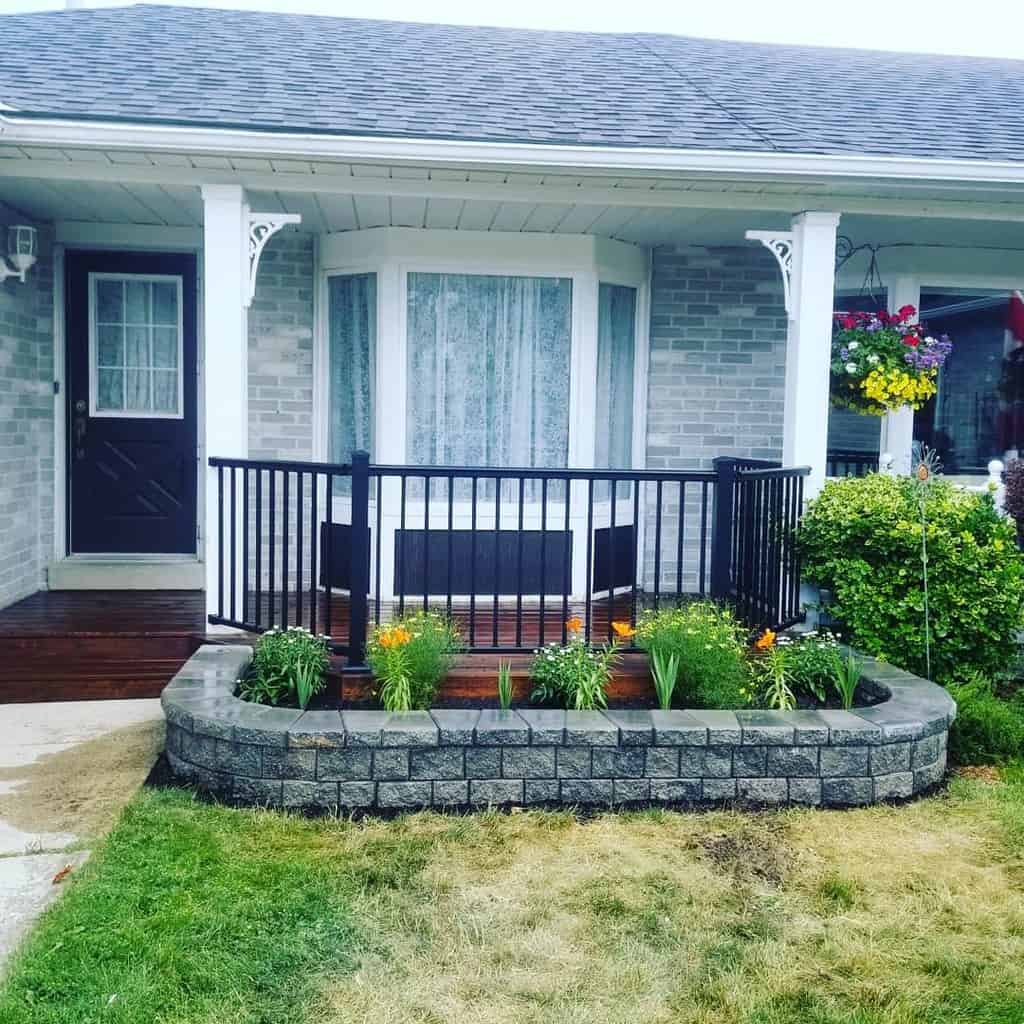
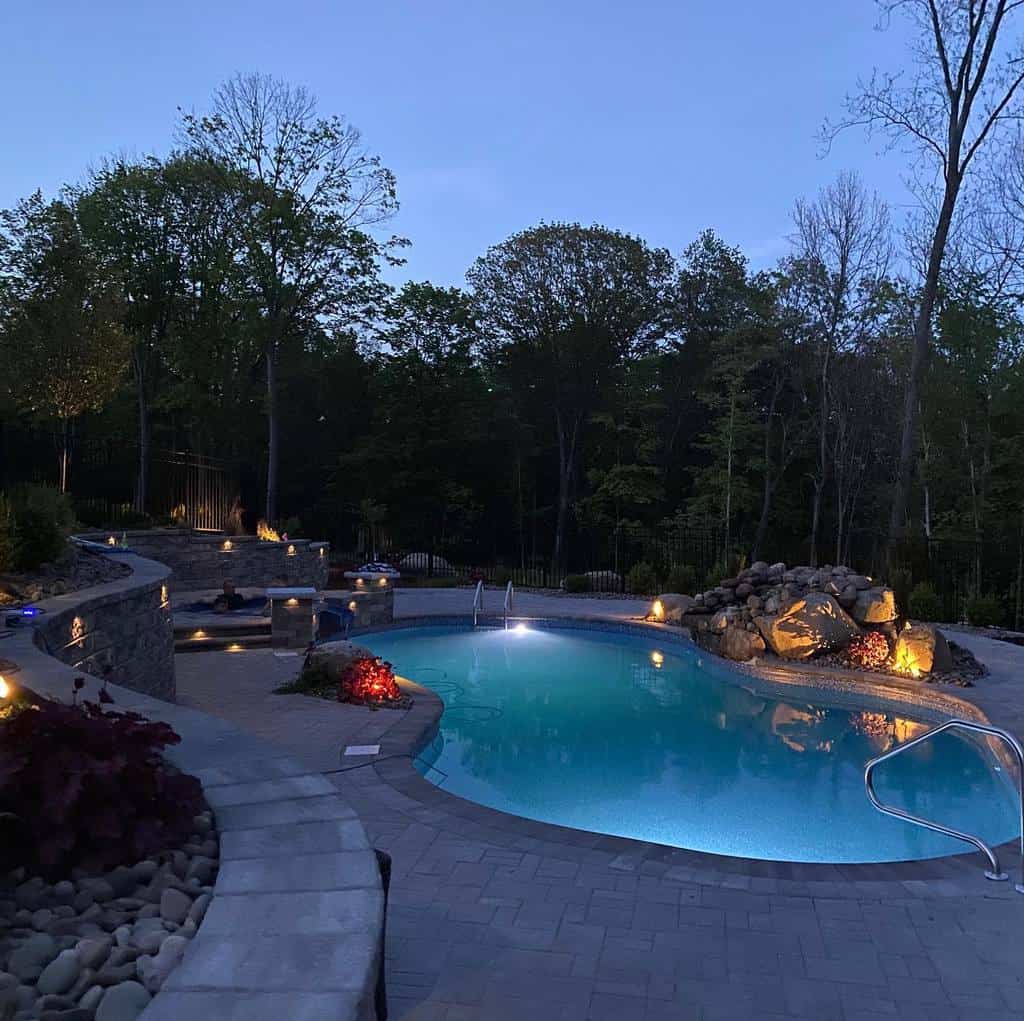
FAQs
What is the best way to give an old garden wall a facelift?
While building a new wall from scratch would be ideal, there are many situations where that’s just not an option. But that doesn’t mean you’re doomed to stare at an ugly garden wall for eternity.
One of the quickest and easiest ways to disguise an eyesore of a wall is with a facade. Wood panels are lightweight and simple to install. You can also find stone and brick overlays that will attach directly to the existing wall material. Just make sure you can use your chosen facade for outdoor use–many products won’t stand up to the elements.
If the entire wall needs to “disappear,” landscaping plants might be your best option. Plant ornamental trees or hedge shrubs in front of the wall to hide it from view. It might take a year or two for your plants to fill out, so be patient. Installing a trellis with a dense-growing vine is another excellent option.
Can you DIY a retaining wall?
In the context of most landscaping projects, yes. A retaining wall is any structure that holds back soil on one side. So even a simple raised planter counts as a retaining wall.
But, you can’t just go into this project without the proper planning, and some support walls do require outside help.
The more soil your retaining wall must support, the stronger both the materials and construction must be. You also need to account for sloping ground, which will increase the amount of pressure on your wall. If you’re not 100% confident in your engineering and building skills, you might want to leave this project to a professional.
Some areas do require permits to build retaining walls over a certain height. It’s best to check your municipality’s guidelines ahead of time, just to be safe.
How can I make my garden wall more visually appealing?
To enhance the visual appeal of your garden wall, consider adding decorative elements like colorful ceramic tiles, mosaic patterns, wall-mounted planters, or hanging baskets filled with flowers or trailing vines.
